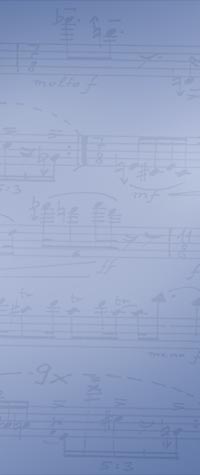
Adelheid
for flute solo (2003-4) or saxophone solo (2009)
- Movements: 1
- Duration: 4'
- Flute premiere:
- Saxophone version dedicated to: Antonín Mühlhansl
- Saxophone premiere: 7.12.2009, New Europe Festival, Duncan Cenre Theatre Prague; Antonín Mühlhansl - sax.
- Publisher: none (available from composer)
- CD: Luminiscence - Monika Duarte Štreitová (flute); produced by Slovart Music
Program Note:
(CZ)
Krátká flétnová skladba chce připomínout ovzduší Vláčilova filmu Adelheid (1970). Podobně jako film je "málomluvná", podobně jako ve filmu za zdánlivým klidem číhají bolestné tóny.
Kompozici určila potřeba úspornosti: ve skrytu je to písnička (ABA) na dva akordy (tónika – subdominanta), ale střídmé ingredience (ostinato, střídání oktáv, crescendo, pauza; čtvrttón jako tečka) jsou naváženy a namíchány velmi bedlivě a vlastně rozmanitě.
Martin Smolka
(SK)
Krátka flautová skladba Adelheid reflektuje atmosféru filmu Adelheid (1969) od českého režiséra Františka Vláčila (1924-1999). Psychologická dráma, odohrávajúca sa v jednej pohraničnej dedinke, vykresľuje neľahké osudy ľudi pár rokov po skončení II. svetovej vojny. Vzťah pohraničníka Viktora a dcéry nemeckého továrnika Adelheid sa končí tragicky. Smolokov minimalistický jazyk v Adelheid prináša v neustálom opakovaní pokoj i vnútorné roztzšenie, jemná nálada bez evidentných vonkajších kontrastov hlboko rezonuje s neviditeľným chvením.
Ako autor sám hovorí: Podobne ako film, Adelheid je "málovravný", podobne ako vo filme za zdanlivým pokojom striehnu bolestné tóny. Kompozíciu určila potreba úspornosti: v podstate je to pesnička (ABA) na dvoch akordoch (tonika - subdominanta), ale striedme ingrediencie (ostinato, striedanie oktáv, crescendo, pauza; štvrťón ako bodka) sú navážné a namiešané veľmi dôkladne a vlastne rozmanite.
(EN)
A short flute composition, called Adelheid, reflects the atmosphere of the film of the same title made in 1969 by the Czech film director František Vláčil (1924-1999). A psychological drama taking place in a small village near the border describes the difficult fates of people shortly after the end of WW II. The relationship between a frontier guard, Victor, and a German factory owner's daughter, Adelheid, ends tragically. Smolka's minimalist language in Adelheid brings, through constant repetition, peace and a certain inner agitation, and a gentle mood without obvious external contrasts resonates deeply with invisible trembling.
As the author says himself: Similarly to the film Adelheid, it is "taciturn", and similarly to the film, behind a feigned quietness, painful tones are lurking. The composition was set by the need to be simple, so basically it is a song (ABA) in two chords (tonic - subdominant), but temperate ingredients (ostinato, octave alternation, crescendo, a rest, quarter-tone as a full stop) are weighed and mixed thoroughly and variedly, actually.







 Listen to an mp3 excerpt
Listen to an mp3 excerpt